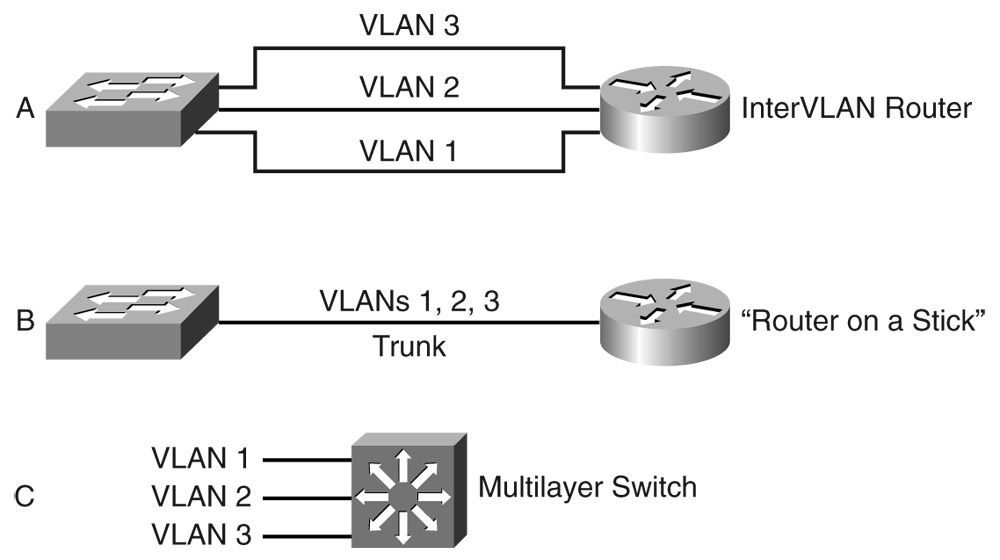A multilayer switch (MLS) is a computer networking device that switches on OSI layer 2 like an ordinary network switch and provides extra functions on higher OSI layers.
Layer 3 switching
The major difference between the packet switching operation of a router and that of a layer 3 switch is the actual implementation. In general-purpose routers, packet switching is usually implemented in software that runs on a microprocessor, whereas a layer 3 switch performs the same operation using dedicated application-specific integrated circuit (ASIC) hardware.
Multilayer switch (MLS) - OSI layer 3 and/or 4
A multilayer switch (MLS) can prioritize packets by the 6 bits in IP DSCP (differentiated services CodePoint). These 6 bits were used in the "old days" for Type of Service (ToS).
The following 4 mappings are normally available in an MLS:
- From OSI layer 2, 3 or 4 to IP DSCP (if IP packet) and/or VLAN IEEE 802.1p.
- From VLAN IEEE 802.1p to IP DSCP.
- From IP DSCP to VLAN IEEE 802.1p.
- From VLAN IEEE 802.1p to port queue.
Many MLSs implement QoS differentiated services and/or integrated services in hardware.
Some MLSs are also able to route between VLANs and/or ports like a common router. The routing is normally as quick as switching (at wirespeed). According to Cisco, Layer 3 switches are basically routers that switch based on Layer 3 information, the basic difference being processing speed and/or the way they do the switching; Layer 3 switches use ASICs/hardware instead of the CPU/software that a router would.
Layer 4-7 switch, web-switch, content-switch
Some switches can use up to OSI layer 7 packet information; these may be called layer 4-7 switches, content-switches, content services switches, web-switches or application-switches.
Content switches are typically used for load balancing among groups of servers. Load balancing can be performed on HTTP, HTTPS, VPN, or any TCP/IP traffic using a specific port. Load balancing often involves destination network address translation so that the client of the load balanced service is not fully aware of which server is handling its requests. Some of the layer 4-7 switches can perform NAT at wirespeed. Also, content switches can often be used to perform standard operations such as SSL encryption/decryption to reduce the load on the servers receiving the traffic, or to centralise the management of digital certificates. Layer 7 switching is the base technology of a content delivery network.
Some types of applications require that repeated requests from a client are directed at the same application server. Since the client isn't generally aware of which server it spoke to earlier, content switches define a notion of stickiness. For example, requests from the same source IP address are directed to the same application server each time. Stickiness can also be based on SSL IDs, and some content switches can even use cookies to provide this functionality.
Layer 4 load balancer
A typical network router simply sends incoming packets onto the appropriate IP address on its network. A layer 4 router, more correctly a NAT with port and transaction awareness, usually performs a form of port translation for sending incoming packets to one or more machines that are hidden behind a single IP address.
The layer 4 refers to the 4 layer OSI model. The router is on the Transport Layer and makes decisions on where to send the packets. Modern load balancing routers can use different rules to make decisions on where to route traffic. This can be based on least load, or fastest response times, or simply balancing requests out. This is also a redundancy method, so if one machine is not up, the router will not send traffic to it.

